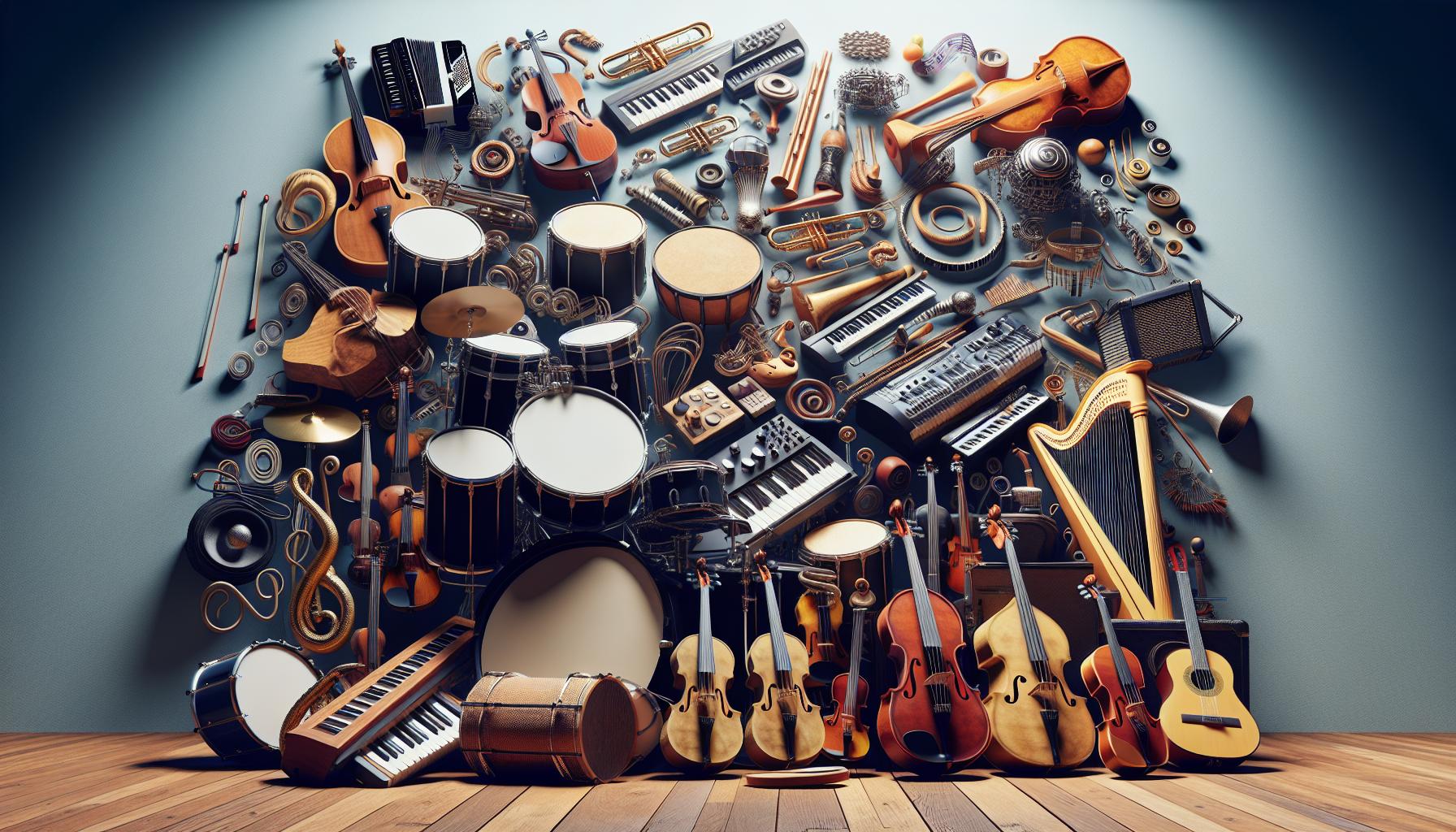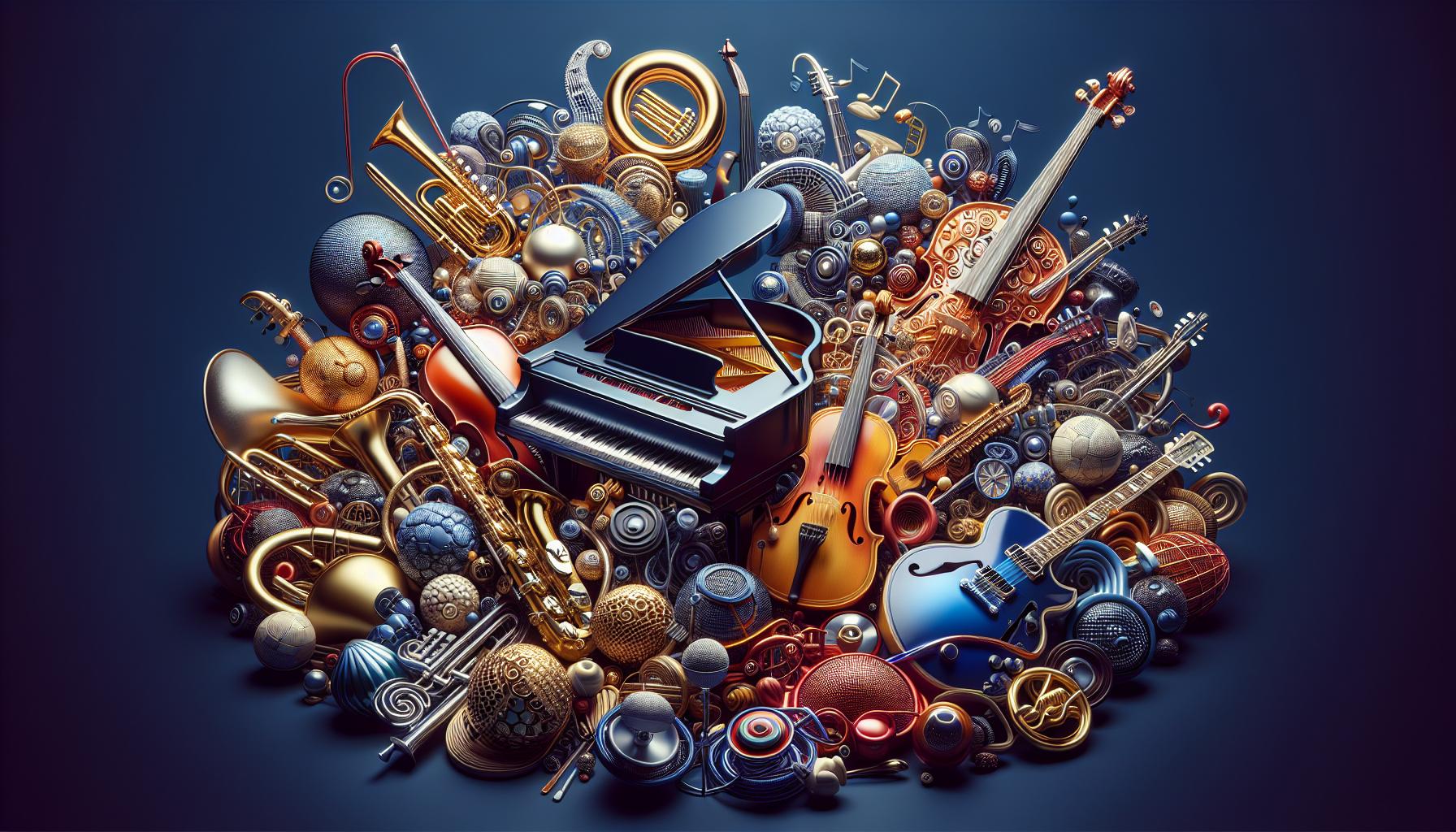Ever wondered why some songs just seem to resonate with your soul? Well, I’m here to tell you that it’s all about harmony. Harmony, in music, is the art of combining notes into chords, and these chords into progression. It’s the secret sauce that gives a song its depth and emotion.
Think of harmony as the backbone of a song. It’s what supports the melody and gives it context. Without harmony, a song would be like a bird without wings. Sure, it might still be able to hop around, but it’s not going to soar.
So, if you’re ready to delve into the world of harmony and discover how it shapes the music you love, you’re in the right place. Let me guide you through the fascinating intricacies of harmony in music, and help you understand its vital role in songs.
Contents
What is Harmony in Music?
When we dive into the realm of music, we often encounter a term, harmony. So, what is harmony in music? It’s a fundamental aspect that brings a unique perspective to any musical composition. Harmony is the way chords are sequenced and juxtaposed. It’s the art of combining multiple sounds, pitches, or tones in a manner that complements each other and creates a pleasing effect.
Harmony isn’t about isolated notes but rather how these notes interrelate and create an intricate web of sounds. Imagine it as the supporting pillar that holds up the edifice of a song; it provides the structure and framework for a tune to take form. When we’re engaged in a melody, it’s the harmony that plays in the background and provides the depth and context to a song.
However, it’s essential to note that harmony isn’t universal; it has diverse interpretations across cultures. Western music revolves around chords and chord progression while Eastern music highlights the interaction between melody and drone.
Throughout our exploration so far, we’ve uncovered the essence of harmony, its relevance and how it influences music. Harmony adds depth to songs, contributing significantly to the emotional resonance we experience when listening to our favorite tracks. It’s a multifaceted aspect of music that demands our attention and understanding. The journey to comprehend harmony is an invitation to dive deeper into the intricate world of music.
Whether western or eastern, harmony has a unique role in the musical fabric of diverse cultures. It brings the melody to life, enhancing the overall auditory experience. As we delve further into the world of harmony, we’ll dive deeper and uncover even more exciting aspects of how it enriches our musical journey. Absorbing and unraveling the role of harmony might indeed be a complex endeavour, but it’s undoubtedly an extraordinarily rewarding one.
The Importance of Harmony in Songs

As experts, we hold harmony at an elevated status in music composition. Harmony adds depth and complexity, taking a simple melody and transforming it into a piece that brims with richness. Without it, your favorite songs might seem dull and monotonous, like bland food devoid of seasonings. Harmony creates layers in music and instils melodious complexity.
You’ve ever wondered why some songs resonate deeply within you? Harmony plays an instrumental role in steering your emotional responses to music. Chords can convey a myriad of emotions. They can make us feel happy, sad, excited, peaceful and a vast range of other human emotions. Isn’t it fascinating how a sequence of notes can impact us on such a deep level? This is the power of harmony.
Yet the influence of harmony doesn’t stop at the emotional level. It’s also fundamentally critical to the overall structure of songs. Just like a solid pillar supports a building, harmony provides structure in music. It integrates individual components of a composition – ‘the melody,’ ‘the rhythm,’ ‘the tempo,’ – into a cohesive piece. Harmony can guide the listener through the song, creating a sense of anticipation or resolution.
Harmony can also dictate the unique sound of different genres. Consider the jazzy suspensions in blues music or the unpredictable chord progressions in progressive rock. Harmony helps define the distinctive sound of those genres, setting them apart from others.
Harmony in music is akin to color palettes in a painting. Just as different color combinations can evoke different emotions, so can different chord progressions. It adds vibrancy, dimension, and uniqueness to an otherwise skeletal framework. Ultimately, harmony enhances the overall auditory experience in music, making it a much deeper and compelling form of art.
Understanding Chords and Progressions
The dance of music thrives on harmony. Have you ever wondered what makes harmony tick? I’ll tell you. It’s the poker-faced duo: chords and progressions.
At the heart of harmony, we find chords. Think of chords as a group of (typically three) notes that produce a distinct harmonic sound when played together. They’re the backbone of harmonic structure. Each chord delivers a unique emotional essence, making them pivotal in setting the tone for music.
If chords are the backbone, chord progressions are the spine that gives shape and movement to a song. A chord progression is a series of chords played in a sequence. They’re the narrative that drives the melody, and they can drastically change the mood and direction of a song.
Let’s consider pop music for a moment. Most pop songs use the same four chords. Ever wondered why they all sound different? Well, it’s because the same chords are arranged in a multitude of progressions.
But it’s not just pop music. Jazz, blues, rock – they all rely on chord progressions to create their unique flavor. For instance, blues music is massively fond of the 12-bar blues progression – a sequence that creates its signature soul-stirring feel.
Look at music theory, and you’ll find countless types of chord progressions. Some common ones include Doo-Wop progression, 50s progression, and the ubiquitous I-IV-V.
In the table below, I’ve compiled some of the most frequently used chord progressions in popular music genres:
| Chord Progression | Genre |
|---|---|
| Doo-Wop | Pop |
| 50s Progression | Rock |
| 12-bar blues | Blues |
| ii-V-I | Jazz |
Learning to listen to these chord progressions in songs, and understanding how they affect the overall harmony is a musical journey in itself. So I encourage you, the next time you listen to your favorite song, try to discern the chords and chord progressions that bring it to life. You might just find that your appreciation for harmony in music grows even deeper.
Types of Harmony in Music
Now that we understand the basics, let’s delve further into some key types of harmony in music. Three main types that I’d like to explore today are Consonant, Dissonant, and Modal Harmony.
Consonant harmony is probably what you’re most familiar with. It’s the backbone of much Western music from folk to classical. But what makes it so appealing to the ear? It’s the arrangement of chords in a way that creates a sense of resolution and completeness.
Let’s dive into dissonant harmony. It’s the opposite of consonant harmony. Rather than sounding resolved, dissonant harmony creates tension. It’s a tool musicians use to heighten emotion or signify change.
Then there’s modal harmony. This isn’t about the chords themselves but how they’re ordered and the scales that they come from. I liken it to choosing a painting’s palette: just as painters choose colors that complement each other, musicians choose modes that work together.
Each type has its unique direction and purpose within a song, and they each contribute to an overall, multifaceted sense of harmony.
Keep your ears open when you listen to music. Can you identify these harmonies in play? You’ll be surprised to notice the tension, resolution, and the emotional ride these harmonies can provide.
How Harmony Enhances the Melody

Now that we’ve understood the main types of harmony, it’s essential to recognize the powerful effect harmony has on a melody.
Harmony dramatically shapes the direction and color of the melody. When harmonizing, I often experiment with layers of vocal or instrumental lines. I’ve found that chord structures can significantly enrich a simple tune. The beauty of harmony is in its ability to add depth and texture.
Let’s consider dissonant harmony. It’s primarily defined by the element of tension. This tension brings emotional intensity to the melody. As a songwriter, when I use dissonant harmony, the listener’s intention is captivated, leading them to anticipate a release.
It’s important to note that harmony doesn’t always follow the melody. In fact, vice versa is also true. A riff or melodic line can actually be inspired by a unique chord progression or harmonic structure, defining what’s known as modal harmony.
Modal harmony introduces character to the music. When I start composing, I consider the scales from which the chords are derived. This evokes emotions ranging from joy, melancholy, to even eeriness.
To add, consonant harmony fulfills our instinctual longing for resolution and order in music. It’s pleasing to the ear and brings about a strong sense of closure.
Looking at major pop hits or classical compositions, you’ll notice plenty of examples where harmony is used to enhance the melody’s impact. I’ve often found myself entranced in melodies more due to the underlying harmony than the tune itself.
To extend your understanding, try identifying these types of harmony in your favorite songs. I guarantee it’ll lead to deeper appreciation.
For the best learning outcomes, I encourage using active listening. You might find distinct patterns in certain genres or be surprised by the diverse use of harmony.
Don’t hesitate to listen to unfamiliar genres or to even try composing. You’ll only learn the mastery of harmony by immersing yourself in it. Finally, remember, realizing the harmony is always a journey, not a destination.
So, as we continue navigating this fascinating territory, let’s turn our attention to a few instruments that play significant roles in creating harmony.
Conclusion
So there you have it. Harmony isn’t just a fancy term tossed around by musicians. It’s the backbone of our favorite songs, giving them depth, texture, and emotional resonance. Whether it’s the tension of dissonant harmony or the resolution found in consonant harmony, it’s clear that harmony plays a pivotal role in shaping our musical experiences. Modal harmony adds another layer, introducing unique character and eliciting varied emotions. I hope you’ll take this newfound knowledge and use it to enhance your music listening journey. Paying attention to harmony can truly open up a new world of appreciation. It’s an essential part of the music we love, and understanding it can only deepen our connection to the songs that move us.
